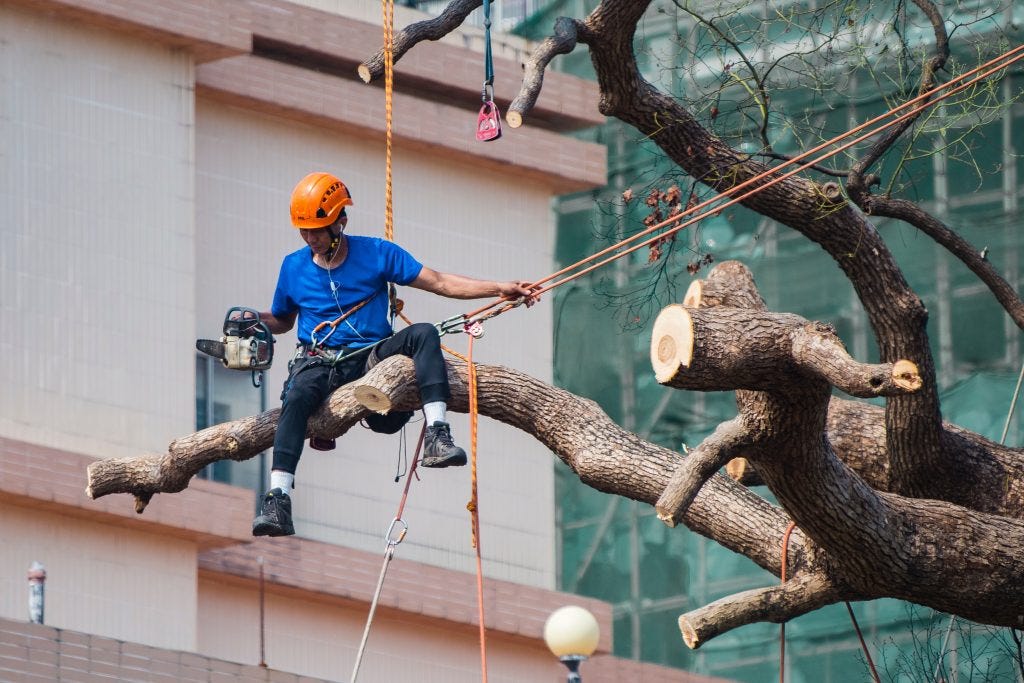Lush trees enhance property aesthetics with graceful beauty while providing wildlife habitat and air quality benefits that delight nature lovers. Yet despite those perks, unchecked tree growth poses property risks that responsible landowners must address to avoid substantial problems down the road. Neglected trees plagued by disease, rapid aging, storm impacts, or overcrowding set the stage for limb drops, infections spreading to other plants, wildfires, and eventual full-tree collapses delivering devastating consequences for people, pets, buildings, and infrastructure if hit.
- Preventing disease transmission
Various bacterial infections, funguses, and blights threaten trees like Emerald Ash Borers wiping out ash species rapidly once they take hold. Since many transmit through root grafts with nearby trees or wind-dispersing spores, infected trees essentially blight entire surrounding populations once blighted themselves. Removing infected specimens right away contains threats preventing diffusion across entire properties or woodlands. It also protects investments made by establishing expensive ornamental or fruit trees you want to preserve over slower-growing native alternatives. Almost always it becomes too late to reverse infections after visible symptoms emerge – just one reason why staying vigilant through professional monitoring pays off long-term.
- Reducing windstorm and lightning damage
Insured properties often overlook leaning trees barely still rooted or with extensive canopy dieback until severe storms topple them directly onto buildings. Yet gradual windstorms and lightning damage accrue over consecutive seasons weakening tree architecture well before the eventual collapse. Getting out ahead of cumulative deterioration using tree risk assessments identifies mature trees declining into liabilities even without inciting storms. Pre-emptive pruning or removal while trees remain otherwise healthy-looking curtails preventable damage risks further down the line. Invest now or regret later.
- Maintaining visibility
Overgrown trees infringing sightlines along roadways or intersections pose lethal visibility hazards for passing motorists and pedestrians trying to navigate safely. But homeowners also underestimate trees overtaking line-of-sight creating dangers for kids darting across yards or obscuring intersections for turning vehicles nearby. Regular pruning or removal reclaims visibility easing navigation and promoting safety on personal properties. It also shows respect toward neighbors, delivery drivers, and visitors trying to access homes without mishaps. After all, relatively small visibility obstructions become life-threatening headaches when accidentally overlooked.
- Allowing construction and remodelling
Home additions, swimming pools, patios, and countless other construction projects simply accommodate existing trees situated smack in their footprints local business. Although modifying designs around each tree seems nature-friendly initially, ultimately builders shoehorn unnatural dimensions into spaces despite shade and root conflicts doomed to undermine projects later.
They are fresh by removing trees from construction areas altogether sets up building durable structures scaled appropriately while allowing flexibility in relocating new trees into ideal spots later without obstruction. The small upfront loss in foliage pays off exponentially for long-term enjoyment and functionality without fighting designs constantly.
- Maintaining pleasant curb appeal
While beauty remains subjective, undisputedly certain dangerous tree situations detract from aesthetics and perceived home values from the street. These include excessively leaning trees looking like blow overs waiting to happen, large overgrown branches imposing on rooflines, and gaps missing chunks destroyed by past storms. Taking control by removing unattractive high-risk trees directly boosts curb appeal while enhancing safety. The freshly exposed yard also presents a decorative blank slate where beautiful new replacement trees shine planted in optimized spots.







